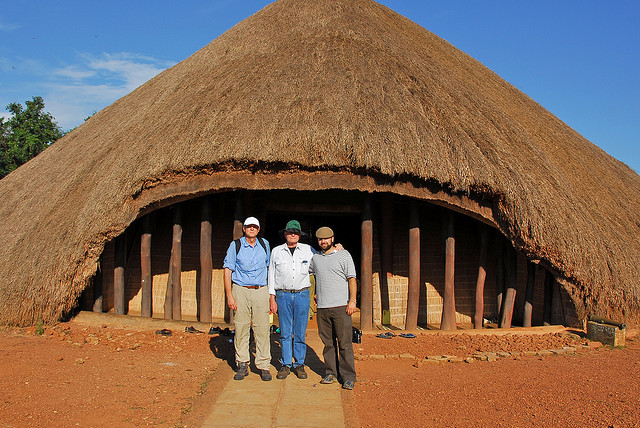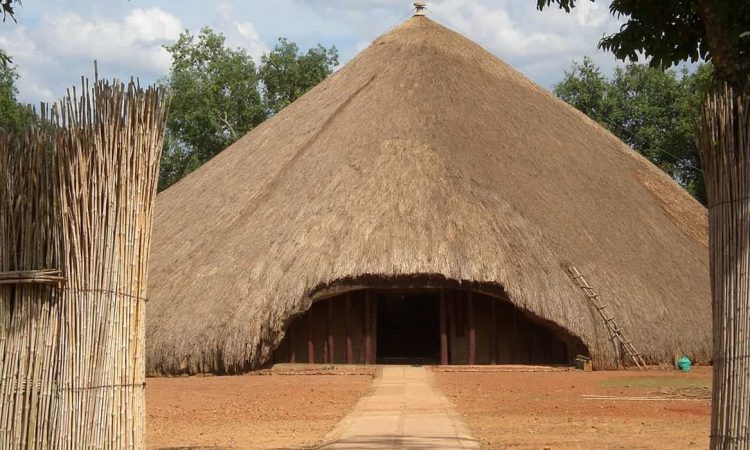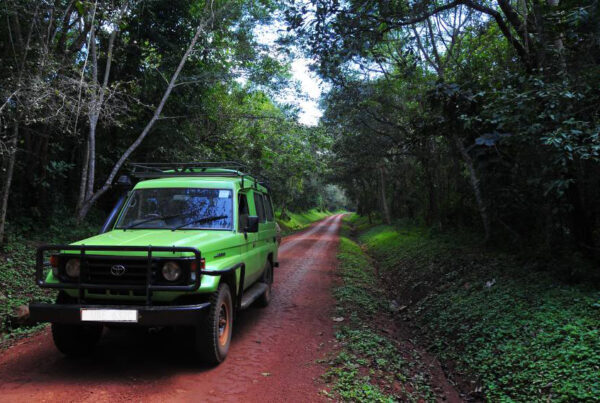Kasubi Tombs Best Time To Go: One Week Plan on a Budget
Stepping Into Uganda’s Living Heritage
Rising gracefully from the hills of Kampala, the Kasubi Tombs stand as one of Uganda’s most treasured cultural sites, a place where history, spirituality, and architecture intertwine to narrate the story of the Buganda Kingdom. Declared a UNESCO World Heritage Site, this sacred ground is far more than an architectural marvel—it is a living museum of Buganda identity, a royal burial ground, and a spiritual center. For travelers drawn to heritage tourism, the tombs offer a rare opportunity to engage with traditions that have been carefully preserved for centuries.
Planning a journey to Kasubi requires more than a casual visit. The experience deepens when it is woven into a structured plan that allows time not only to explore the site itself but also to absorb the rhythm of Kampala and the surrounding landscapes. For travelers seeking to experience the tombs on a budget while still enjoying the richness of Ugandan culture, a one-week itinerary offers the perfect balance between affordability and immersion. To maximize the experience, understanding the best time to go is essential, since seasons, cultural festivals, and weather conditions influence both the site’s atmosphere and the traveler’s journey.
This guide takes you step by step through the most suitable times to visit the Kasubi Tombs, while providing a practical yet enriching one-week plan tailored for those traveling on a budget.
Understanding the Historical Significance of the Kasubi Tombs
The Kasubi Tombs are more than a physical space—they are the spiritual heart of Buganda. Established in the late nineteenth century, the site became the burial ground for four Buganda kings, known as the Kabakas, making it a sacred royal site of immense cultural significance. The central structure, built primarily from organic materials such as reeds, thatch, and timber, stands as a testament to indigenous craftsmanship and traditional Ganda architecture.
This vast hut, known locally as Muzibu Azaala Mpanga, represents the cosmos in Buganda belief. Its circular design and layers of symbolism offer insight into how the Baganda perceive life, continuity, and ancestry. A visit here does not only involve viewing architecture but also entering a realm where spiritual practices are still active. Rituals and ceremonies are regularly performed, sustaining the sacredness of the tombs as a living heritage site rather than a static monument.
The Best Time to Visit the Kasubi Tombs
Timing plays a critical role in shaping the Kasubi experience. Weather patterns, cultural activities, and visitor flow all determine the atmosphere of the site.
Uganda experiences two main dry seasons: December to February and June to August. These months are generally regarded as the best times for cultural exploration. The weather is mild, skies are clearer, and the likelihood of rain disrupting travel is significantly lower. For visitors planning to walk through the compound, observe traditional architecture, and take guided tours, these periods offer optimal comfort.
However, the rainy seasons of March to May and September to November should not be dismissed entirely. During these months, the landscape around the tombs turns lush and vibrant, giving the compound a serene atmosphere. Budget travelers often find these months attractive, as accommodation and transport rates can be more affordable due to reduced tourist traffic. Those who are comfortable with occasional showers may discover a quieter and more intimate experience at the tombs.
Equally significant are cultural festivals and royal commemorations. The Buganda Kingdom holds annual events where music, dance, and rituals transform the tombs into vibrant cultural theaters. Attending during these celebrations provides a profound glimpse into Buganda traditions, making timing not only a matter of weather but also cultural engagement.
Structuring a One-Week Plan on a Budget
A carefully structured week in Kampala centered around the Kasubi Tombs allows visitors to balance cultural exploration, relaxation, and affordability. Traveling on a budget does not require compromising depth of experience. Instead, it encourages immersion into authentic local life, where small eateries, shared transportation, and local markets enrich the traveler’s perspective.
Day 1: Arrival and Settling into Kampala
The first day of the journey is best devoted to arrival, acclimatization, and orientation. Budget accommodation options in Kampala range from modest guesthouses to backpacker hostels, many of which provide a homely atmosphere and opportunities to meet fellow travelers. Spending the evening exploring a local market or tasting street food offers an inexpensive yet fulfilling introduction to Uganda’s capital.
Day 2: Introduction to Kampala’s Cultural Landscape
Before diving directly into the Kasubi Tombs, the second day may be used to gain context by exploring Kampala’s other cultural landmarks. The Uganda Museum provides historical background that enriches understanding of Buganda traditions. A visit to the Lubiri, the Buganda Royal Palace, also prepares travelers for the tombs by situating them within the broader Buganda monarchy. Meals in local restaurants, where traditional dishes like matoke, beans, and groundnut sauce are served at modest prices, keep expenses low while deepening the cultural encounter.
Day 3: Visiting the Kasubi Tombs
The third day is devoted entirely to the Kasubi Tombs. Guided tours, often led by custodians of the site, explain not only the architectural design but also the spiritual importance of the tombs. Stories of the Kabakas buried here and the symbolism behind every detail of the structure create a profound narrative that lingers long after departure. Budget travelers often find that entrance fees are affordable, and the value of the guided experience is immense.
Spending time in the compound without rushing allows the visitor to observe the rhythms of the site. The serenity, the rituals, and the sense of history create an atmosphere where time seems to stand still. Photographs capture the physical beauty, but it is the intangible aura of reverence that makes the day unforgettable.
Day 4: Exploring Surrounding Communities
The fourth day expands the journey beyond the tombs into the communities that surround Kampala. Engaging with local craftspeople, visiting markets, and observing daily life provides insight into how Buganda culture thrives in contemporary contexts. Affordable transportation such as boda bodas (motorcycle taxis) or shared taxis allows for budget-friendly exploration. Meals in roadside eateries, often consisting of Rolex or grilled meat, keep expenses minimal while immersing visitors in authentic Ugandan flavors.
Day 5: A Day at Lake Victoria
A short trip to Lake Victoria on the fifth day balances cultural immersion with natural relaxation. Budget boat rides and lakeside dining offer an opportunity to enjoy the vast waters while staying within modest spending limits. The tranquility of the lake complements the spiritual depth of the Kasubi Tombs, allowing visitors to reflect on the journey so far.
Day 6: Deepening the Cultural Connection
Returning to Kampala, the sixth day can be devoted to attending cultural performances, many of which showcase Buganda dances and music. Some cultural centers in Kampala offer affordable evening performances that celebrate Uganda’s diverse traditions. These performances, though modestly priced, provide immense cultural enrichment, rounding out the week with vibrant energy.
Day 7: Reflection and Departure
The final day is devoted to reflection, light exploration, and preparation for departure. Time may be spent revisiting a favorite market or café, purchasing local crafts, or simply strolling through the city. This quieter day ensures that the journey ends with calmness and clarity, allowing the visitor to depart with lasting memories.
Traveling on a Budget in Kampala
Affordability in Kampala is attainable without sacrificing depth of experience. Accommodation in budget guesthouses, meals in local restaurants, and transportation through shared taxis or boda bodas keep costs low. Markets provide not only inexpensive food but also a chance to interact with locals and experience Kampala beyond its touristic façade.
Budget travel also encourages deeper cultural engagement. Instead of dining in upscale hotels, visitors find themselves eating alongside locals, learning how daily life unfolds in Uganda’s capital. Instead of relying on private cars, shared transport creates opportunities for interaction and observation. This immersion is not only cost-effective but also enriching, transforming the journey into a living classroom of culture and tradition.
Cultural Etiquette and Respect at the Kasubi Tombs
Visiting the Kasubi Tombs requires sensitivity and respect. As a sacred site, it is governed by traditions that must be observed. Modest dress, respectful silence, and adherence to guidelines given by custodians ensure that the visitor honors the sanctity of the tombs. Photography, while allowed in certain areas, may be restricted in others, especially during rituals.
Respecting these customs enhances the experience by allowing the traveler to step into the cultural and spiritual rhythm of the place rather than merely observing from a distance. This respectful engagement is part of what makes a journey to Kasubi transformative.
The Emotional Resonance of the Kasubi Tombs
Perhaps the most profound aspect of the Kasubi Tombs lies in the emotional connection it evokes. Visitors often describe a sense of calm, reverence, and timelessness that permeates the site. The tombs are not static monuments but living symbols of Buganda continuity, embodying both history and the present.
Walking through the compound, one feels the weight of centuries of leadership, tradition, and spirituality. It is not only the architecture that impresses but the atmosphere of reverence. The experience lingers long after leaving, making the Kasubi Tombs one of Uganda’s most memorable cultural encounters.
Experiencing Kasubi With WildHorn Africa
A visit to the Kasubi Tombs is more than a cultural excursion—it is a journey into the heart of Buganda identity, a chance to walk in the footsteps of kings, and an opportunity to connect with Uganda’s spiritual heritage. Timing the visit well, whether during the dry seasons for comfort or during cultural festivals for vibrancy, ensures that the experience is maximized. A thoughtfully structured one-week plan makes it possible to explore not only the tombs but also the rich cultural and natural offerings of Kampala and its surroundings, even on a budget.
For travelers eager to immerse themselves in this unforgettable journey, it is recommended that you book your African tours and safaris through WildHorn Africa. With their expertise, the Kasubi Tombs and Uganda’s broader cultural landscape are revealed in depth, authenticity, and respect. Every moment becomes more than sightseeing—it becomes an experience of heritage, connection, and discovery.





 WildHorn Africa – Authentic and unforgettable tours across Africa, guided by local experts who know the land, wildlife, and culture best.
WildHorn Africa – Authentic and unforgettable tours across Africa, guided by local experts who know the land, wildlife, and culture best.


